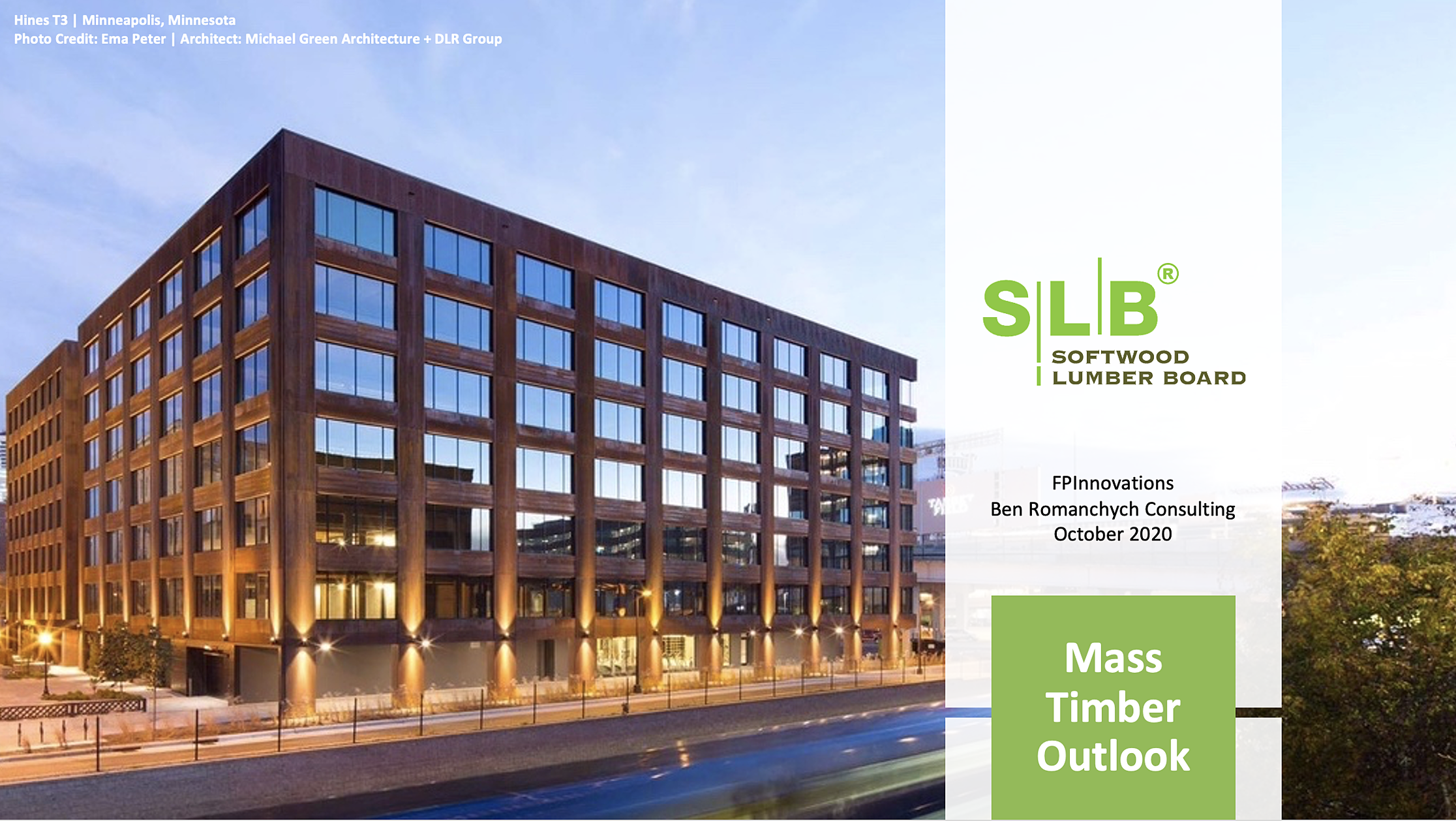HIGHLIGHTS
PROGRAM UPDATES
Think Wood Publishes Review of Embodied Carbon Policies, Best Practices Mark Your Calendar: International Mass Timber Conference Starts on March 30 Catalyst Project Case Study Educates and Inspires Salt_Lake_City_First AWC Supports California Building Code Education, DevelopmentINDUSTRY NEWS
Mass Timber and Hybrid Systems Well Suited for Commercial Construction Mass Timber Provides Solution for Century-Old Factory’s Vertical Expansion Concept Home Promotes Healthy Living Average Home Size Levels Off Following Years of Decline Green Building Magazine Features Wide Range of Mass Timber Designs Forests’ Carbon-Storage Function Justifies Investments in Management, Preservation Remodeling Work to Continue Upward Trend in 2021 Houston Suburbs See Surge in Demand for Multifamily Housing, Planned CommunitiesINSIGHTS ON THE COMPETITION
Favorable Market Conditions Widen Opportunities for Composites in DeckingProgram Updates
Think Wood Publishes Review of Embodied Carbon Policies, Best Practices

With funding from the Binational Softwood Lumber Council, Think Wood recently published Understanding the Role of Embodied Carbon in Climate Smart Buildings: Report on Carbon Reduction Policy and Design Best Practices, which reviews design best practices and embodied carbon policies in North America and Europe. The report was researched, written, and peer reviewed over the course of 2020. Its launch is timely, as “Addressing Climate Change” is the number one design trend in 2021 per Think Wood’s recent survey of 750 architecture, engineering, and construction (AEC) stakeholders.
Think Wood undertook a broader AEC industry launch of the report in March that included dedicated email blasts to the Think Wood database, targeted social promotion, a promotional blog post, features on the What’s New page of the Think Wood website, and promotion at a sponsored webinar on the topic of Decarbonizing the Built Environment. Using the report as a springboard, several of Think Wood’s planned 2021 media partnerships will closely align to the topic of low-carbon construction.
Mark Your Calendar: International Mass Timber Conference Starts on March 30

The sixth annual International Mass Timber Conference will be held virtually March 30–April 1. Co-produced by WoodWorks and the Forest Business Network, this year’s conference will feature more than 40 expert presentations, four education tracks, and scores of virtual exhibits, including a booth hosted by Think Wood. Additionally, there will be networking opportunities and curated building tours of recent, innovative mass timber projects. Register for the conference today at masstimberconference.com, and learn more here.
Catalyst Project Case Study Educates and Inspires
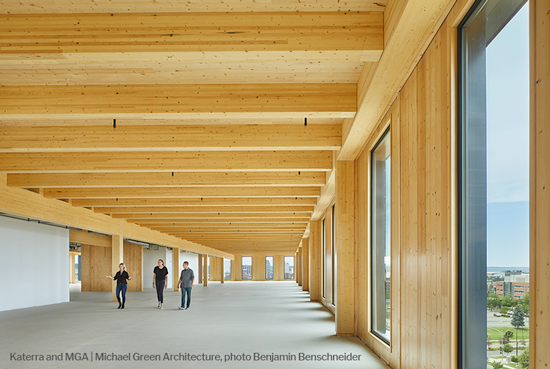
WoodWorks’ latest case study is inspiring and educating developers and design professionals by sharing an in-depth look at Catalyst, the five-story mass timber office building designed by Katerra and MGA | Michael Green Architecture for Eastern Washington University. Catalyst is notable for its sustainability and precedent-setting use of wood materials.
Catalyst is the first cross laminated timber (CLT) office building in Washington State and was designed to adhere to Passive House principles and achieve zero-carbon and zero-energy certifications. Catalyst is also one of the first buildings in North America to achieve a long span using true wood-to-wood composite action in its rib panels (instead of concrete composite action) and is one of the tallest U.S. buildings to include CLT shear walls. The project conducted destructive structural testing of critical CLT shear wall corner connections and full-scale rib panels at Oregon State University, where both stiffness and strength exceeded predictions and demonstrated that the system is replicable.
Salt Lake City First to Adopt New Off-Site Construction Standards
The Salt Lake City Council is the first jurisdiction to adopt the ICC/MBI Standard 1200: Standard for Off-Site Construction: Planning, Design, Fabrication, and Assembly and ICC/MBI Standard 1205: Standard for Off-Site Construction: Inspection and Regulatory Compliance. An American Wood Council (AWC) staff member serves on the ICC committee that developed the standards, which are set to be finalized in mid-2021 to be considered for reference in the 2024 International Building Code.
The new standards will be important to lightweight wood frame and mass timber construction; they aim to provide minimum requirements for off-site and modular construction to safeguard public health and safety.
AWC Supports California Building Code Education, Development
The AWC presented a three-part webinar series to more than 90 California building code officials on tall mass timber provisions that were recently adopted into the 2019 California Building Code and come into effect this July. The first webinar provided an overview of tall mass timber construction; the second explained state-specific tall mass timber height and area provisions; and the third covered principles of fire resistance and protection, special inspections, acoustics, and energy performance. The California Building Officials Association hosted the series.
In addition, an AWC staff member was appointed to the state’s Building, Fire, and Other Committee, one of six California Building Standards Commission’s code advisory committees that review and make recommendations on code-change proposals submitted by state agencies.
Industry News
Mass Timber and Hybrid Systems Well Suited for Commercial Construction
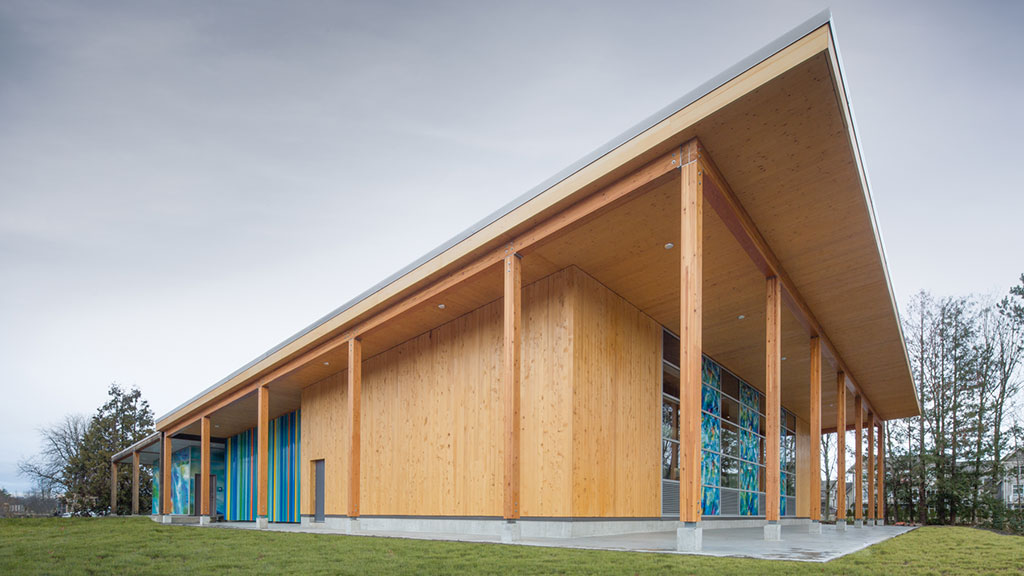
ConstructConnect’s Journal of Commerce recently explored why and how prefabricated mass timber products are well suited for industrial construction. As with other segments, mass timber and hybrid systems offer the industrial sector many comparative advantages, including cost-efficiencies, shorter build times, high performance, flexibility, code compliance, and sustainability.
The piece highlighted several recent examples of completed wood-based public industrial buildings to demonstrate wood’s capabilities, including the single-story glulam post-and-beam Wood Innovation Research Lab in British Columbia (B.C.), which is the first industrial building in North America to be designed to a Passive House standard; the Alexandra District’s geothermal utility building, which used glulam columns and beams and CLT roof and walls as part of a hybrid system and took five days to erect; and the University of B.C.’s Campus Energy Centre, which alone is responsible for reducing the university’s greenhouse gas emissions by 33%.
Read more about the benefits of mass timber in commercial construction here.
Mass Timber Provides Solution for Century-Old Factory’s Vertical Expansion

Engineering News-Record recently featured the 69–71 A Street project in South Boston, a first-of-its-kind mass timber overbuild in the United States. The site’s original building was a 120-year-old former rivet factory, built of masonry and heavy timber. The design team explored several options for a vertical expansion before settling on CLT, thanks to its light weight.
According to project engineer Bryan Maltais of Boston-based McNamara ∙ Salvia Structural Engineers, the choice to use mass timber to build a two-story addition on the original building “was a no-brainer because it led to no foundation upgrades, except where we were adding an elevator core.” Maltais believes that other older buildings in Boston could benefit from A Street’s “lightweight and cost-effective rehabilitation methods.”
Read more about the project here.
Concept Home Promotes Healthy Living

Builder KB Home and the Well Living Lab, a research lab founded by the Mayo Clinic and Delos, have teamed to design and build a new healthy-living concept home in Phoenix, Arizona, a first step in a multiyear research project to understand and educate consumers on the home environment’s impact on their physical and mental health. The concept home employs the latest in health-focused technologies and biophilic design and construction materials. It is located in KB Home’s Santolina at South Mountain community, near the Mayo Clinic’s Scottsdale campus.
Read more about the concept home here.
Average Home Size Levels Off Following Years of Decline
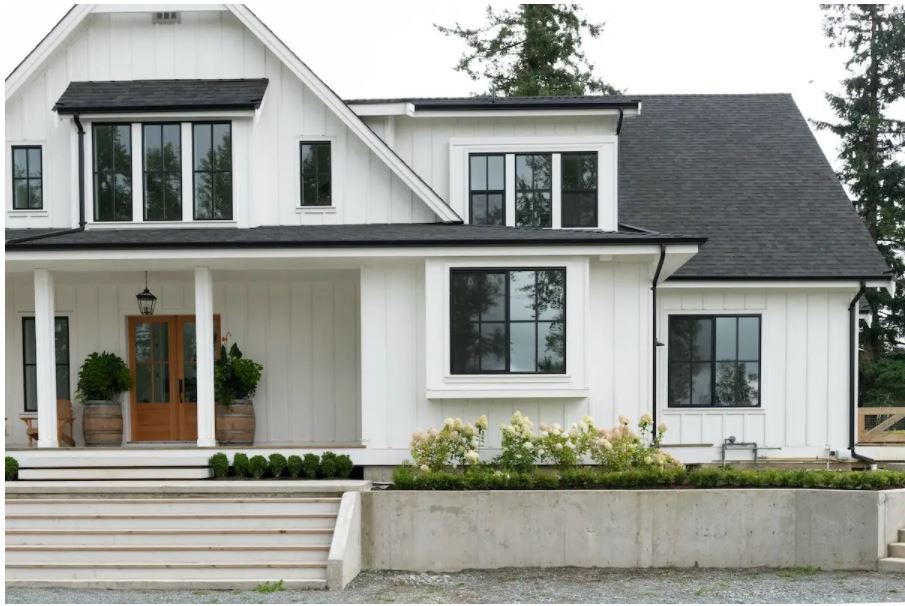
The NAHB recently released data showing that new home size leveled off at 2,274 square feet in 2020, following four consecutive years of decline. The NAHB is optimistic that home size will grow in future years, as more and more consumers seek additional living space as a result of the pandemic and new telework realities.
Read more about the data here.
Green Building Magazine Features Wide Range of Mass Timber Designs
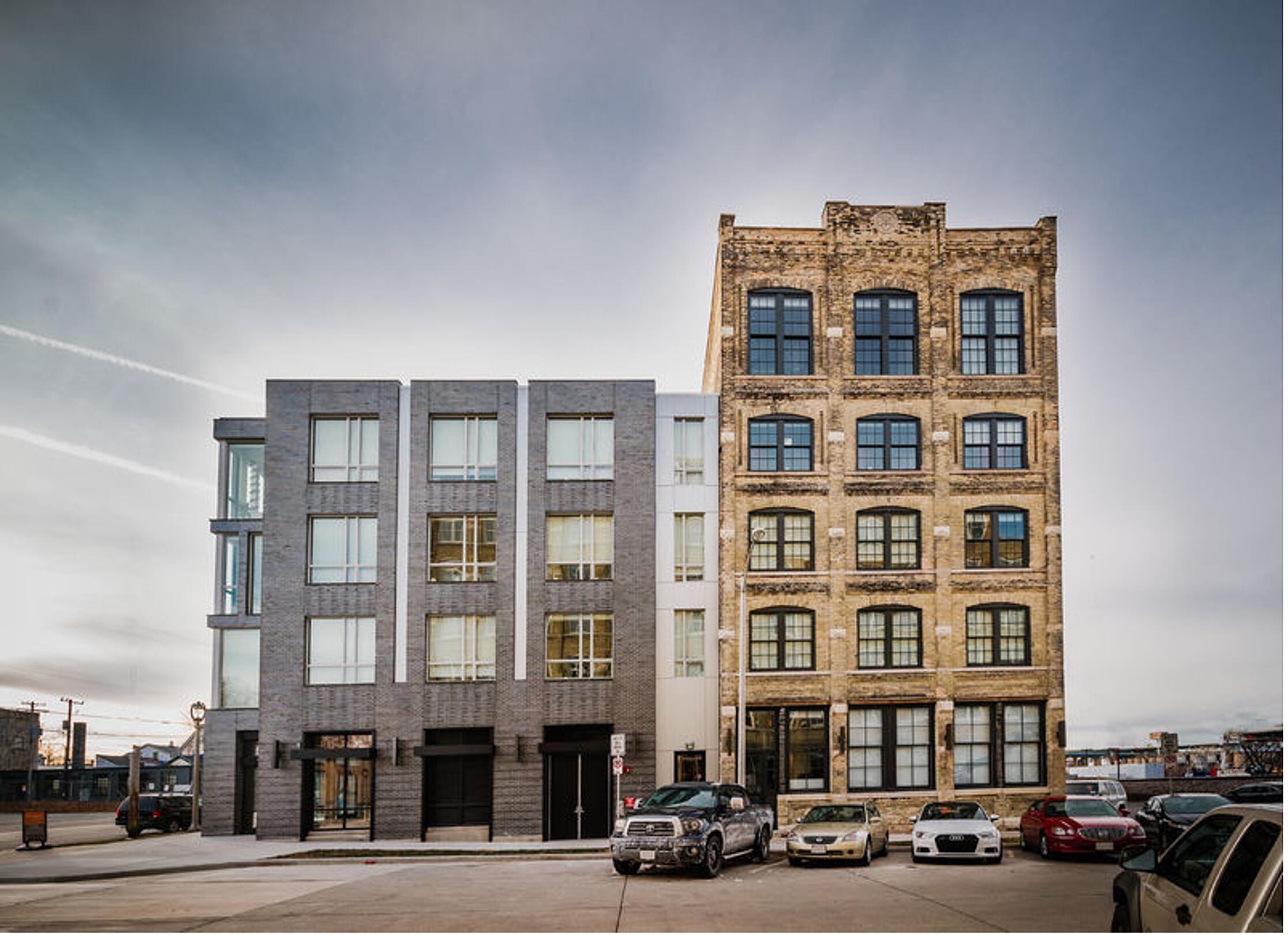
Green Building & Design magazine recently featured a catalog of 12 stunning examples of mass timber architecture. Nearly all the examples are from the United States, and combined, they show how mass timber can support and enhance the design of a wide array of building and construction types.
The piece includes a media partnership mention of Think Wood with regard to the Timber Lofts project in Milwaukee, Wisconsin. Timber Lofts, a five-story, adaptive reuse project, is the first mass timber building in Milwaukee and a 2021 Wood Design Award winner.
View the featured projects here.
Forests’ Carbon-Storage Function Justifies Investments in Management, Preservation
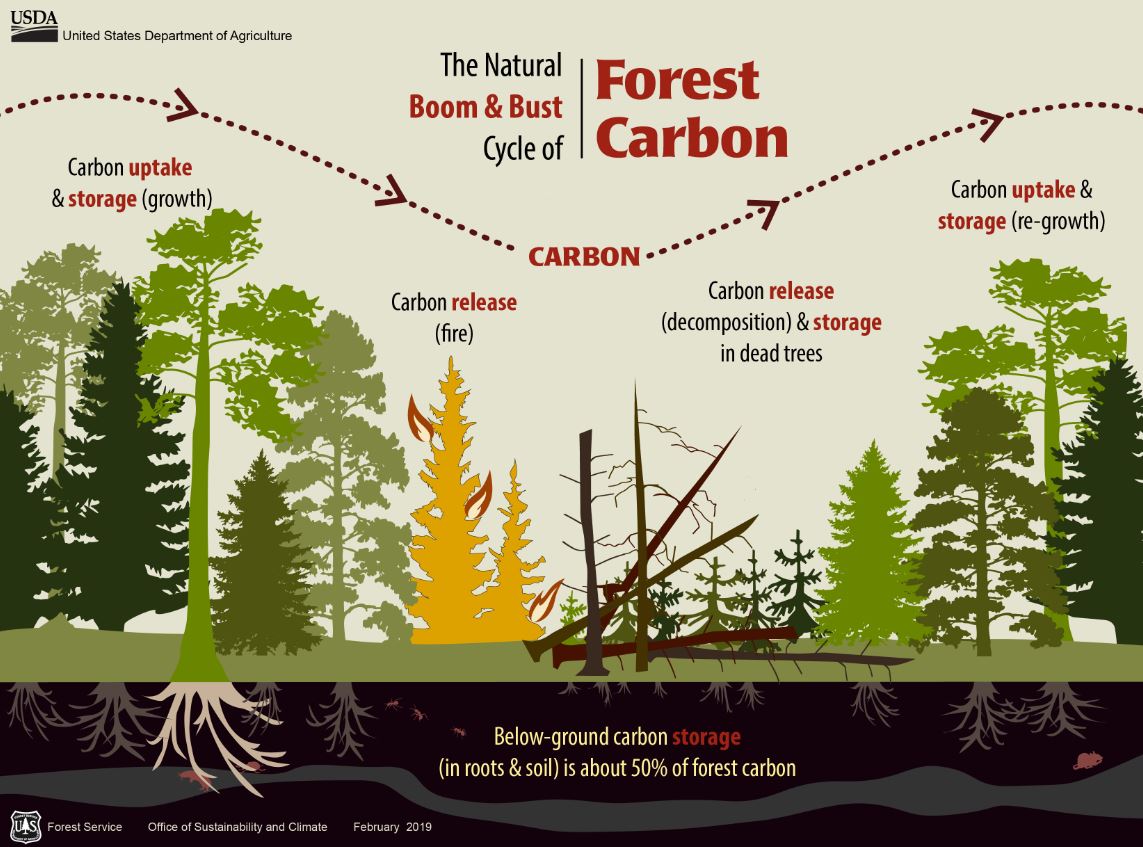
Timber analytics firm Forest2Market recently published a primer on U.S. greenhouse gas emissions and the critical role that forestlands play in storing carbon. The continental United States contains approximately 632 million acres of forestland, which store an estimated 71,808 million metric tons of carbon dioxide. The piece stresses the importance of maintaining the economic viability of forest ownership, including by creating and growing markets for low-value wood that can be converted into mass timber and other wood products, so as to maintain forests as carbon sinks.
Read the evidence-based analysis here.
Remodeling Work to Continue Upward Trend in 2021

Zonda’s recently released Q4 2020 Residential Remodeling Index (RRI) was full of good news for the segment—spending on residential remodeling posted a 1.7% increase from the previous quarter, marking 35 consecutive quarters of growth since remodeling activity bottomed out in 2011. Even more impressive, high-end spending on residential remodeling increased 10.3% year-over-year in the quarter.
Contrary to previous fears of market contraction, Zonda now expects that remodeling will continue trending upward throughout 2021 and beyond, growing by 4.8% on average in 2021, 1.6% in 2022, and 4.2% in 2023. Its forecast is premised on the strong housing market and growing optimism in the overall health of the economy.
Read more here.
Houston Suburbs See Surge in Demand for Multifamily Housing, Planned Communities
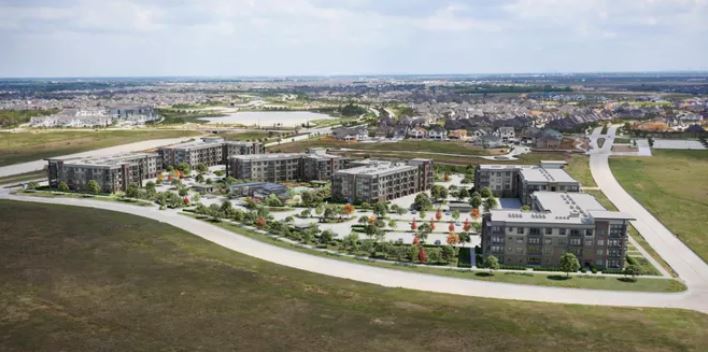
Houston is seeing a surge in demand for housing in its suburbs and exurbs, as a growing number of residents migrate from its urban core. This shift to the suburbs is creating opportunities for multifamily housing and master-planned community developers. Historically, most multifamily tenants in the Houston market were millennials or empty nesters, but the pandemic has prompted a broader cross section to opt for multifamily buildings, motivated by amenities and lifestyle choices.
Softwood lumber products are a great fit for multifamily expansion in markets such as these, as the combination of lower building heights and favorable existing building codes fosters wood’s immediate entry, while wood’s sustainability, performance, and aesthetic benefits can help developers to differentiate their products.
Read more about this market opportunity here.
Insights on the Competition
Favorable Market Conditions Widen Opportunities for Composites in Decking

Builder magazine recently covered the continued strong growth of composite decking products. Composites had already been gaining market share in decking, but Builder notes that even more builders and contractors are turning to them in response to the high price of lumber and thanks to technological advances that are enabling composites to mirror the aesthetics of wood more closely.
In addition to touting benefits like lower lifetime costs and maintenance, composites are also promoting their sustainability benefits. For example, according to Patrick Barnds, senior vice president of product management at the AZEK Company, the parent company to TimberTech, “Homeowners have saved more than 1 million trees by building their outdoor spaces with TimberTech” since 2015.
Read more here.
Industry Resources
FEA's Housing Dashboard
This housing dashboard is provided compliments of Forest Economic Advisors (FEA):
View the March Dashboard
Virginia Tech's Monthly Housing Report
This monthly housing commentary report is a free service of Virginia Tech and is intended to help one gauge future business activity in the U.S. housing market.
January 2021 Reports (released in March 2021)
Part A: January Housing Commentary
Part B: January Economic Conditions


